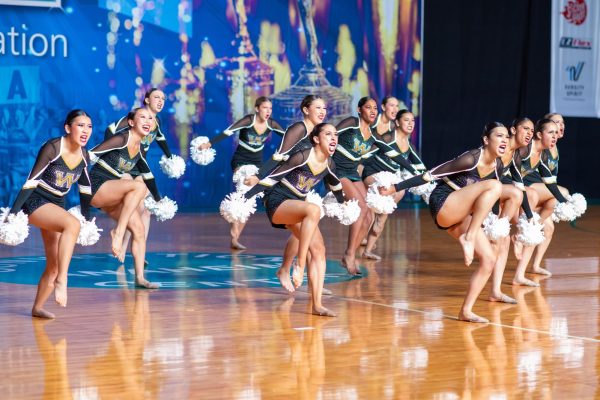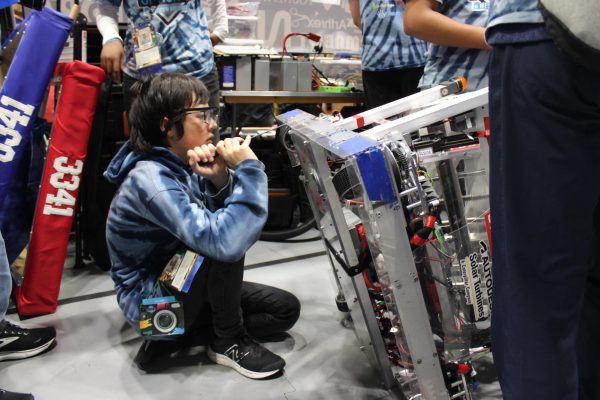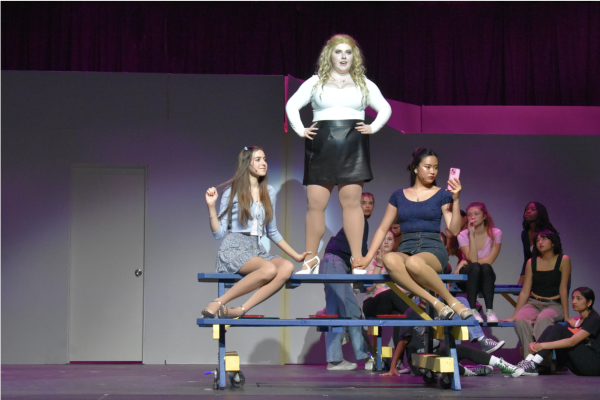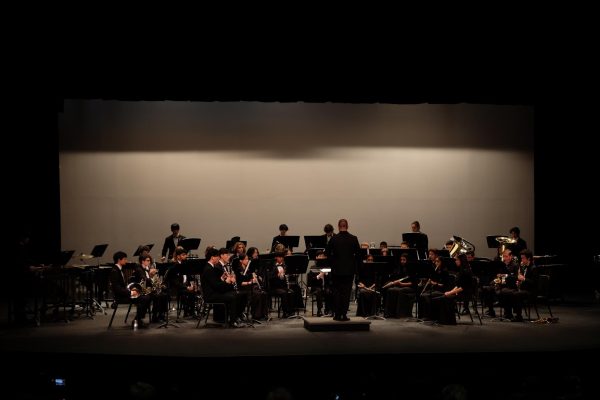Nayak, Gupta win science contests
April 8, 2022
When Ayush Nayak (11) was in elementary school, he often rushed home after school to sit in front of his parents’ old computer and watch video after video about computer hardware. As the computer’s condition deteriorated, Nayak had the idea to build a new computer with the knowledge he gained from binge-watching YouTube videos. Thus, using basic power tools and screwdrivers, a sixth-grade Nayak assembled a PC using a custom PC-building kit he’d found on Amazon.
Since then, Nayak said his interest in computers has grown exponentially. While he still likes to spend his time watching videos about computers, he also enjoys performing experiments and testing his own hypothesis on how to build faster computers.
As part of his project for the Greater San Diego Science and Engineering Fair (GSDSEF), a competition which lasted from March 16-20, Nayak presented his “discovery of InSb/Si quantum dots for next-generation multivalued high-transport transistor technology.” His project was entered in the category of Physics and Astronomy, though the content of it spanned from computational sciences to chemistry and calculus. A primary focus of Nayak’s research was on quantum dots, which are semiconductors with electronic and optical properties.
Nayak said he felt passionate about improving transistor technology, a form of science with emphasis on the use of switches to amplify electrical power, by studying quantum dots, as he said he has been fascinated by the binary code used by computers ever since elementary school.
“I’m pretty much interested in computer hardware, but only really got into the deeper parts of it later on, mostly through a YouTube rabbit hole, so I thought improving transistor technology would be an amazing way to learn more [about both topics],” Nayak said.
For Kavya Gupta (11), participating in GSDSEF offered her an opportunity to explore areas of science she had interest in.
Gupta’s project on “Energy Efficiency Between Different Synaptic Vesicle Release Locations” came from an interest she had in learning about neuroscience to better connect with her family members.
“For neuroscience, my grandfather has experienced dementia and slowly but surely I’ve definitely seen the effects of dementia,” Gupta said. “Since I’ve always been interested in science, I want to understand why exactly this is happening.”
Gupta has spent the past few years researching Alzheimer’s disease and other neurological disorders. She saw the GSDSEF competition as a chance to bridge her years of research with computational biology—a field she had just recently begun studying.
With COVID-19 precautions still in place, the GSDSEF competition was hosted virtually through Zoom, where participants shared their projects through slideshow presentations one-on-one with a judge.
To help students prepare for the presentational aspect of the GSDSEF competition, science teacher My-Nga Ingram organized mock seminars for participating students to share their projects with the Westview science department.
“They gave me very valuable feedback since they were all science teachers who had experience in research,” Gupta said.
Nayak, who had previous experience competing in GSDSEF virtually last year, said that the online environment was relaxing and he enjoyed being able to present from the comfort of his own home. However, when one of his assigned judges showed up to review his project 30 minutes late, Nayak said he grew anxious.
“I was stressed for 30 minutes waiting, but having an idea of the judging process, and knowing ahead of time exactly what was required and the general fair experience definitely helped,” Nayak said.
Despite the technical difficulties he faced, Nayak achieved his goal of winning the Grand Award for the senior division in Physical Sciences, qualifying him to compete in the Capital Area Science and Engineering Fair (CaSEF) and guaranteeing him a spot at the International Science and Engineering Fair (ISEF) hosted in-person at Atlanta, May 7-13. Additionally, Sydney Zhang (9) and Amy Wang (11) respectively won second place awards at the GSDSEF competition, and Kara Fan (11) won the first place award and the Reuben H. Fleet Memorial Award. Fan will also be attending the CaSEF competition this year.
“I had a lot of faith in my project and really wanted to spread it to the world,” Nayak said. “I didn’t really plan on anything at the international competition [or] expect to make it this far, but it would be awesome to hopefully pick up some awards and try to continue spreading my research to thousands of scientists and students.”
Gupta won second award in the GSDSEF competition and also submitted her work to the Junior Science and Humanities Symposium (JSHS), where she was chosen as one of five students in Southern California to participate in the national JSHS competition in Albuquerque, New Mexico, April 20-23. Gupta said she looks forward to the possibility of being able to travel to Albuquerque for the national competition and she is excited to be able to present her project in-person for the first time.
“Hopefully, I’ll be able to have the opportunity to present my project and share my poster with other students and scientists,” Gupta said. “I’m thinking I might go into this industry so I want to keep an open mind and use this experience to help me figure out if I want to pursue a future in research.”
In preparation for his upcoming competitions, Nayak said he plans on continuously practicing his presentation and refining his project.
“I can’t wait to meet some awesome people I’ve been talking to and also attending,” Nayak said. “In the meantime, I’ll be working on fabricating more transistors on silicon wafers, and doing more physical tests. I also will rerun all my simulations and obviously practice presenting a million times.”






